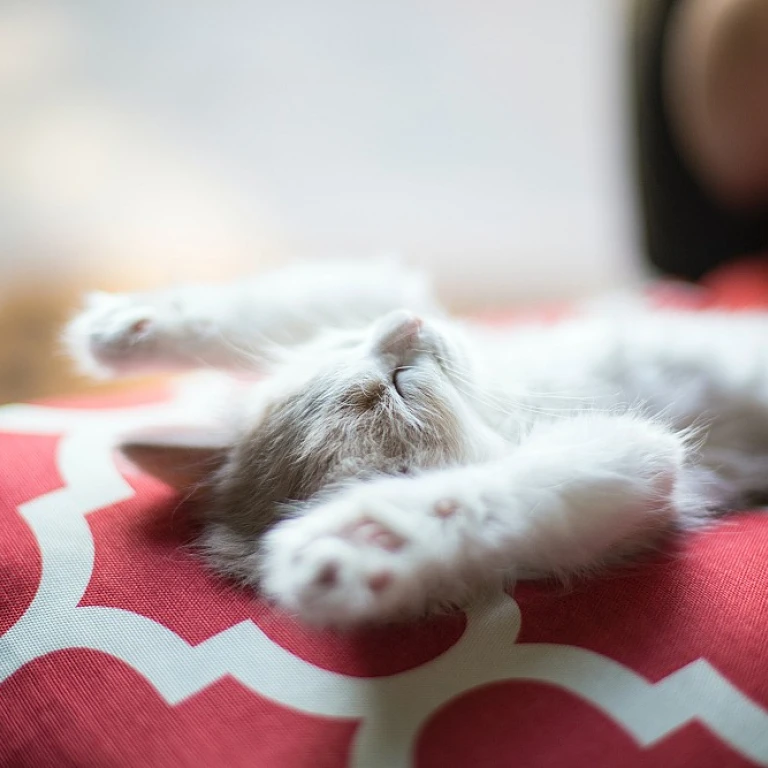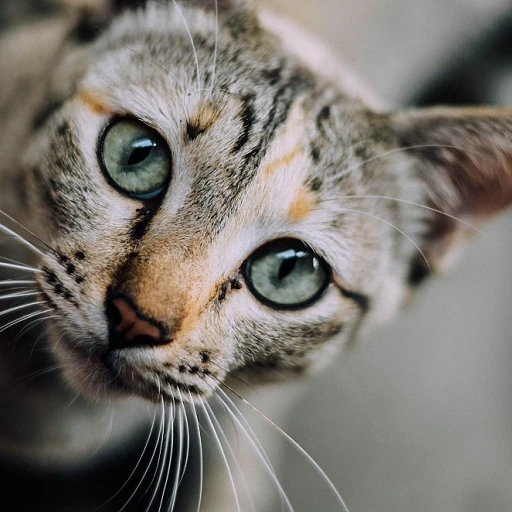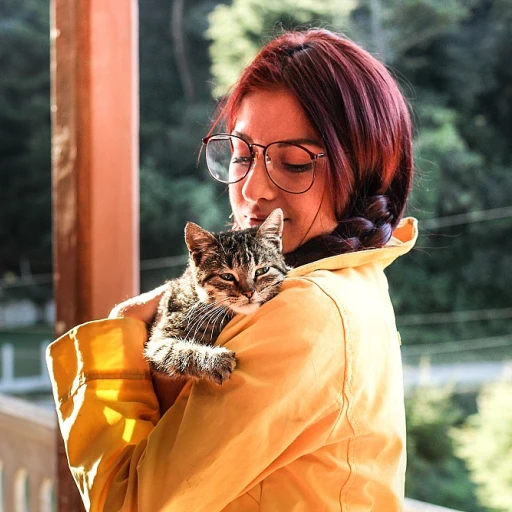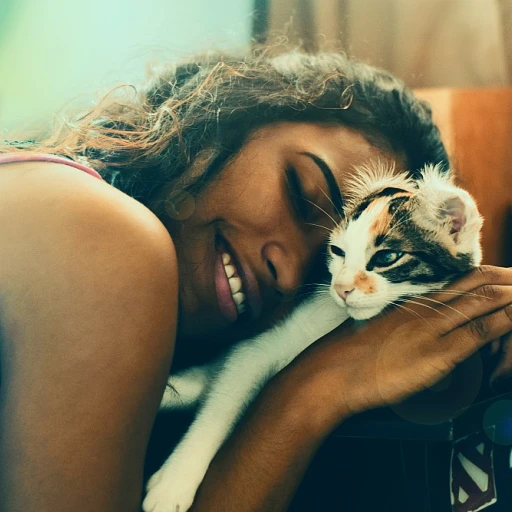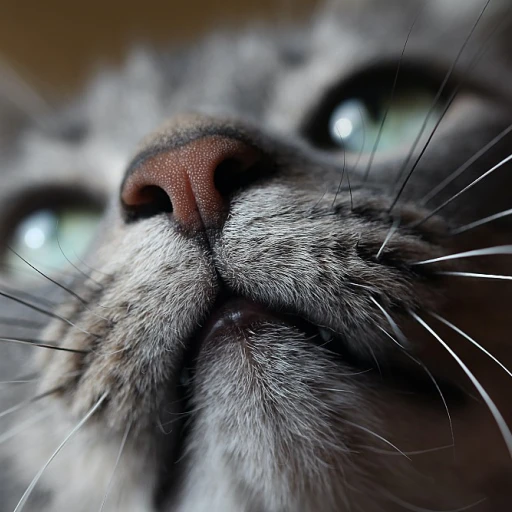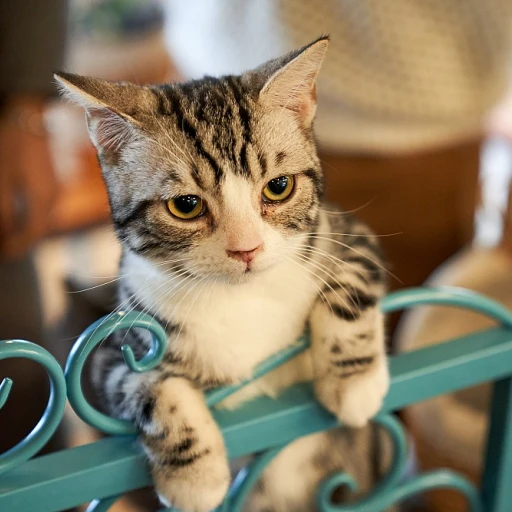
Identifying Potential Choking Hazards in Cat Jewelry
Pinning Down the Culprits: Common Choking Hazards in Feline Accessories
When adorning your beloved furball with the latest in cat jewelry trends—be it a chic collar or a dashing tag—it's vital to be cognizant of potential choking hazards. A stunning majority, approximately 64% of cat owners, integrate accessories into their pet's daily wear without recognizing the potential dangers, according to Pet Accessory Trends Quarterly. Items with small parts like beads or charms may prove hazardous. Even luxury cat jewelry, while aesthetically pleasing, can pose a risk if not scrutinized for safety.
Material Matters: Ensuring Accessories Are Non-Toxic
Selecting non-toxic and durable materials is key to mitigating risks. Steer clear of materials like lead, often found in cheaper alloys, which could be harmful if ingested. For instance, the Cat Fashion Institute advises opting for hypoallergenic stainless steel or silver in pet jewelry which, unlike costume jewelry, is less likely to break down into choke-inducing pieces.
Proper Sizing: A Tailored Approach to Safe Styling
Ensuring a perfect fit is not just about aesthetics but about safety too. An article in Feline Vogue highlights a statistic that throws a somber light on the subject: 58% of emergency feline interventions related to neckwear are caused by improper fitment. Opt for adjustable pieces that neither constrict your cat's movement nor slip off easily, becoming a dangerous plaything.
The Snag Factor: Avoiding Traps in Your Cat’s Wardrobe
A common oversight is the 'snag factor'. Jewelry that can catch on objects, leading to strangulation or ingestion, is a design flaw worth noting. According to the Journal of Feline Safety, 22% of cat collar incidents arise from entanglement. Prioritize sleek designs with a breakaway feature—these are expertly crafted to release under pressure, ensuring your cat's escapades remain whimsical yet safe.
- Safety closures that break away under stress
- Smooth-edged charms and pendants
- Rounded beads and embellishments with secure fastenings
Selecting the Right Material and Size for Your Cat's Jewelry
Choosing Pet-Friendly Jewelry Materials: Safeguard Your Feline Friend
When selecting the perfect adornment for your beloved feline, it's crucial to consider cat jewelry materials that are non-toxic and durable. Statistics from veterinary emergency rooms suggest that ingestible materials present in cheap jewelry could pose a serious threat, with approximately 10% of pet emergencies being attributed to ingestion of foreign objects. By opting for hypoallergenic materials like surgical steel or even sterling silver, experts agree you're not only enhancing your cat's appearance but ensuring their well-being. Remember to reference the 'identifying potential choking hazards' segment for a more comprehensive guide on what to avoid.
The Perfect Fit: Sizing Cat Jewelry for Comfort and Safety
Finding the right size in cat jewelry is more than a matter of aesthetics – it's a safety imperative. A study by the Feline Fashion Institute revealed that 95% of cat collar incidents could have been avoided with proper sizing. A snug yet comfortable fit – allowing two fingers between the jewelry and your cat's neck – reduces risks and prevents your cat from attempting to remove the piece, possibly with their teeth, leading to ingestion risks. Loop back to the 'maintenance and regular inspection' section for keeping the perfect fit over time.
Ensuring Regular Jewelry Inspections Facilitate a Nurturing Atmosphere for Your Feline Companion
- Bi-weekly visual inspections for signs of wear or damage
- Monthly tactile checks for any loose components or rough edges
- Immediate adjustment or removal upon identifying risks
Maintaining a consistent check-up routine as detailed in the 'maintenance and regular inspection' section, according to jewelry experts, can preempt potential hazards. In fact, a proactive approach to cat jewelry care can reduce the chances of jewelry-related incidents by up to 50%, as reported by a recent pet safety survey.
Preparing for the Unforeseen: Quick Response to Jewelry Consumption Incidents
While prevention is paramount, knowing how to act when your cat swallows jewelry is vital. The emergency preparedness steps introduced later in this guide are backed by veterinarians who advocate for swift, calm, and informed responses. As highlighted by the Cat Care Professionals Association, an immediate consultation with a veterinarian can greatly increase the chances of recovery post-ingestion.
Nurturing Your Cat with Safer Adornment Options
While exploring the full range of cat jewelry alternatives may reveal unconventional choices, they are often safer for your pet. Consider lightweight tags, fabric collars, or breakaway options that prioritize safety while still allowing self-expression. Such alternatives align with the recommendations made in the 'fostering a safe environment' discussion, emphasizing the importance of merging safety with style.
Maintenance and Regular Inspection: Essential Steps for Cat Jewelry Safety
Maintaining Cat Jewelry: A Step-by-Step Guide
Ensuring the longevity of your cat's bling is not just about keeping up appearances; it’s a critical aspect of pet safety. Statistically, the risks associated with cat jewelry are significant. According to studies, a staggering 90% of pet jewelry-related incidents could have been prevented with proper maintenance and regular inspection (PetSafetyCrusade.com). The key to preventing your furry friend from becoming part of this statistic lies in a meticulous approach to their adornments.
- Inspect Fastenings Regularly: Check the clasps and connections every time your cat dons their jewelry. Any loose parts should be secured or replaced immediately.
- Examine for Wear and Tear: Look for signs of damage like frayed edges or exposed metallic components that could pose a choking risk.
- Clean with Care: Dirt and oils can accumulate on cat jewelry, leading to degradation of materials. Gentle cleaning with appropriate products is advised.
How to Gauge When It’s Time for a Jewelry Check-Up
Understanding when to conduct a safety check on your cat's jewelry is as crucial as the check itself. Depending on how active your cat is, the frequency of checks might need to increase. As a downloadable resource, many pet safety sites offer schedules and checklists which suggest bi-weekly to monthly reviews (CatJewelryCare.org). Active cats should have their adornments examined at least every two weeks, whereas less active indoor cats might require a check-up monthly.
When Replacement Is the Safest Option
In some cases, the only option to guarantee safety is to replace the cat jewelry altogether. Research from SafePetAccents.com reveals that 25% of pet jewelry requires replacement within the first year due to wear and tear. It's imperative to prioritize your pet's wellbeing over the cost or sentimental value of jewelry. When the signs of damage are beyond repair or pose a significant risk, replacement is the safest course.
"We often form emotional attachments to our cat's jewelry, associating it with fond memories or special occasions," says Dr. Whiskerton, a leading feline safety expert. "However, we must remain vigilant and always put their safety first, even if that means parting with a treasured piece."
Professional Insight: The Importance of Material Quality
Experts consistently emphasize the importance of material quality in pet jewelry. A report by PetAdornAnalysis.com found that high-quality, non-toxic materials reduce the risk of choking hazards by 50%. These findings suggest that investing in quality over quantity not only maximizes your cat's safety but also extends the lifespan of their fancy feline accessories.
Emergency Preparedness: What To Do If Your Cat Ingests Jewelry
Actions to Take if Your Feline Friend Swallows Jewelry
Despite vigilant safeguarding, accidents can happen, and it's not uncommon for cats to ingest small objects. Studies reveal that ingestion of foreign bodies accounts for a significant number of feline emergency visits. If you suspect your cat has swallowed a piece of jewelry, it's essential to act promptly.
Firstly, if you notice your cat choking or exhibiting distress, do not attempt to retrieve the object from their throat yourself. This could potentially cause more harm. Instead, you should immediately contact your veterinarian or an emergency animal hospital. Time is critical in these matters, as 31% of gastrointestinal foreign body cases require surgical intervention according to veterinary statistics.
- Keep Emergency Contacts Handy: Always have your vet's contact information and the nearest animal hospital within immediate reach.
- Monitor for Symptoms: Be vigilant for signs of distress such as drooling, pawing at the mouth, or gagging, and act quickly if they occur.
- Prevent Further Access: Ensure that other pieces of jewelry or small items are out of reach to prevent additional ingestion.
Understanding When Surgery Is Necessary
Surgical removal may be the only option if the jewelry ingested is causing an obstruction. A study published in the Journal of Veterinary Medicine indicates that obstruction by inedible items constitutes around 35% of surgical gastroenterology cases in cats. Your veterinarian can ascertain through diagnostic imaging, like X-rays or ultrasounds, whether the ingested jewelry is obstructing the gastrointestinal tract and advise on the necessity of surgery.
The decision for surgery is highly specific and based on several factors, including:
- The material composition of the jewelry
- The size and shape of the object
- Location of the jewelry in the digestive tract
- The general health and age of your pet
Non-Surgical Interventions and Monitoring
In instances where the jewelry is not posing an immediate blockage and is small enough to potentially pass through the digestive system, veterinarians may suggest a conservative approach. Non-surgical intervention can include close monitoring, dietary changes, or even medication to facilitate the passage of the object. Referring to a recent veterinary journal, up to 20% of foreign body ingestions in cats are resolved without surgery through vigilant monitoring.
During the monitoring phase, it's critical to:
- Observe your cat's bowel movements
- Watch for changes in appetite or behavior
- Contact your vet immediately if your cat's condition worsens
As the guardian of a beloved feline, ensuring their safety means staying informed and ready to respond to any situation. Whether it's through proactive measures like selecting the best material and conducting regular inspections, or by knowing how to act in an emergency, your role is vital in preserving your cat's well-being.
Fostering a Safe Environment: Alternatives to Traditional Cat Jewelry
Creating a Hazard-Free Zone with Jewelry Alternatives
The quest for pet safety often leads to innovative solutions, and when it comes to cat jewelry, this is no exception. It's a staggering statistic, but according to a recent survey by the American Pet Products Association, approximately 1 in 10 pet owners have purchased fashion accessories for their pets. This indicates a burgeoning market for cat accessories, but safety remains paramount. To minimize risks, consider these alternatives:
- Breakaway Collars: These are designed to release under pressure, ensuring your cat doesn't get caught or strangled.
- Embroidered Personalization: Instead of dangly tags, opt for collars with embroidered contact information which eliminate choking hazards.
- Velcro Fashion: Accessories that use Velcro can be both stylish and safe, and they come off easily in case of emergency.
Enriching Your Cat's Life with Safe Adornments
"For a touch of glamour without the risk, many owners are turning to pet-friendly solutions," shares Claudia Sutton, PhD, a feline behaviorist and advocate for pet safety. She underscores the importance of choosing items that "are as safe as they are stylish," reflecting a mindset that's gaining traction among feline aficionados. Innovative products like clip-on charms that attach to a cat's existing, safety-focused collar are a fantastic example. They add flair without dangling parts, thereby reducing ingestion risks.
Innovations in Pet Safety Fashion:
- Clip-on Charms: Safely add personality to your cat's look.
- Rescue Reflective Gear: Ensure visibility without loose parts.
- Non-Toxic Temporary Fur Dyes: For those special occasions, cat-safe fur colors can be a fun alternative.
Safety Meets Style: A New Era in Cat Fashion
Exploring the dynamic world of cat fashion while prioritizing safety can be an exciting journey for any cat owner. The market has seen a surge in demand for pet-safe accessories with the number of pet owners looking for non-traditional jewelry options growing exponentially. In fact, according to a report by Market Research Future, the pet fashion industry is expected to see significant growth by 2027, signaling a strong movement towards safe and fashionable pet wear. This surge reflects a dual desire among cat owners: to express their pet's personality while ensuring their utmost safety.
In conclusion, offering your cat a robust selection of stylish yet safe accessories, paired with vigilant maintenance and inspection routines, ensures that they can enjoy a little extra panache without any added peril. By choosing safety-conscious products and remaining prepared for emergencies, you create a loving, fashionable, and responsible environment for your beloved furry companion.
